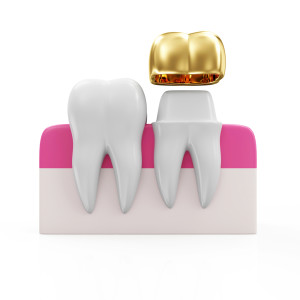For years, dental crowns were primarily made of shiny metal. This meant restorative dental work was easily spotted, plus the metal caused sensitivity to hot and cold foods for many patients. But modern dental crowns come in a variety of materials, many designed to be both durable and beautiful. So, if you have delayed a dental appointment for fear of receiving a metal crown, it’s time to learn what your restorative options are, and how modern dental crowns could help.
What Purpose Do Crowns Serve?
Though crowns are often thought of as ways to complete smiles after tooth loss, there are actually a number of possible reasons a dentist might recommend a crown. For instance, if:
- You have had a deep cavity filled, and need to protect your tooth
- A chip or crack is present; the crown helps keep it from worsening
- After root canal therapy a crown helps prevent reinfection
Depending on the function of the crown, whether it’s protecting a fragile tooth or replacing a missing one, the crown can be secured in a number of ways, such as with a dental bridge, implant or a cementing process.
What Are the Materials Used to Make Crowns?
Modern dental crowns come in a variety of materials, offering patients an opportunity to consult with the dentist about what their needs are, both cosmetically and functionally.
There are four primary forms of crowns:
- All Porcelain – a porcelain crown will be made to match your remaining teeth in size, shape and shade. Porcelain is stain-resistant and durable, much like your natural teeth enamel.
- Ziroconia- is an even stronger form of porcelain, that offers the same cosmetic benefits but with even more durable results than traditional porcelain.
- PFM (porcelain-fused-to-metal) – as the name implies, PFM combines the strengths of both porcelain and metal, namely offering the cosmetic benefits of porcelain, while still strong enough to be used on highly used back teeth.
- Metal –modern metal fillings are safe, and may be recommended to some patients, based on the cost or location of the missing or damaged tooth.


